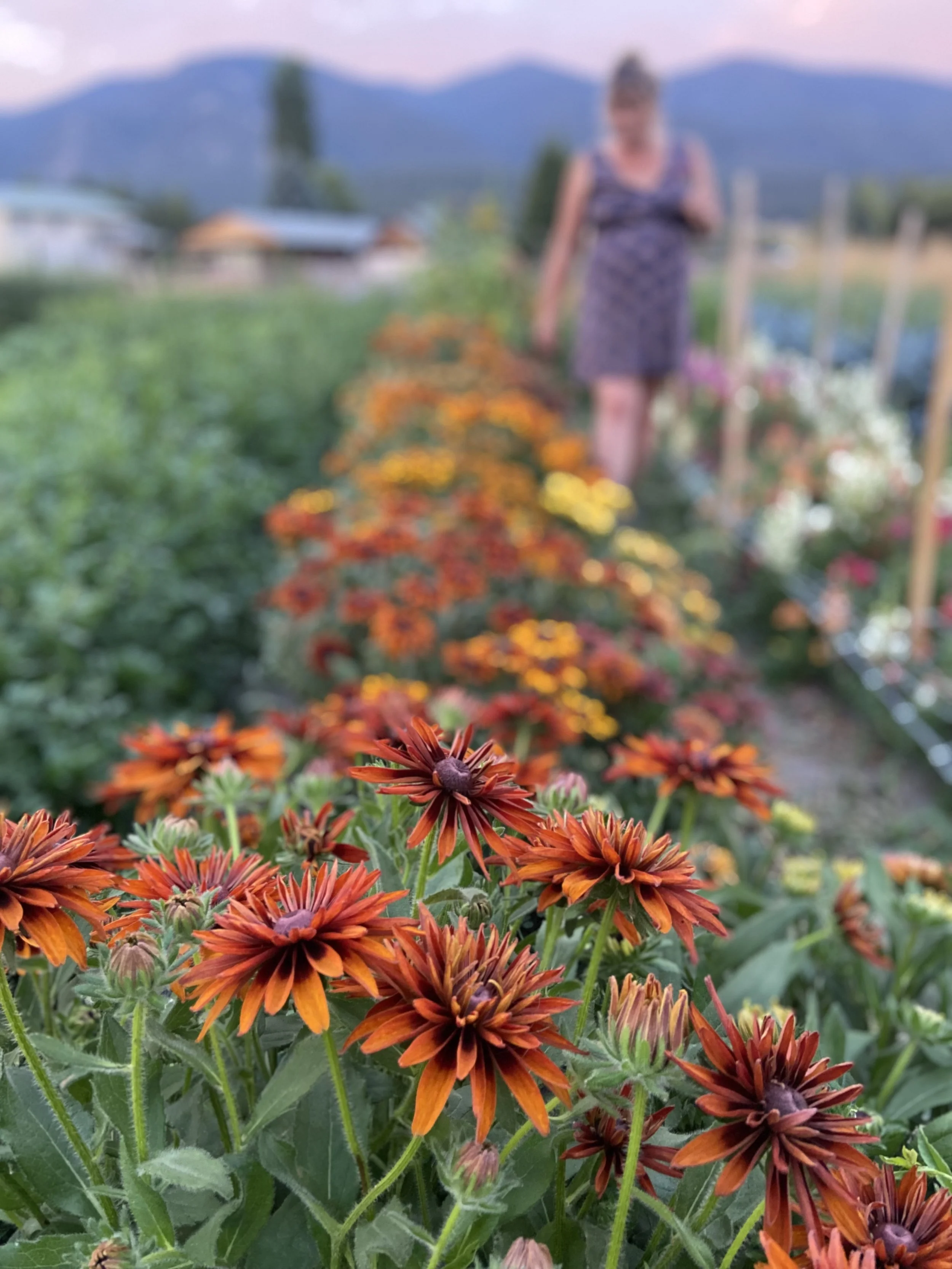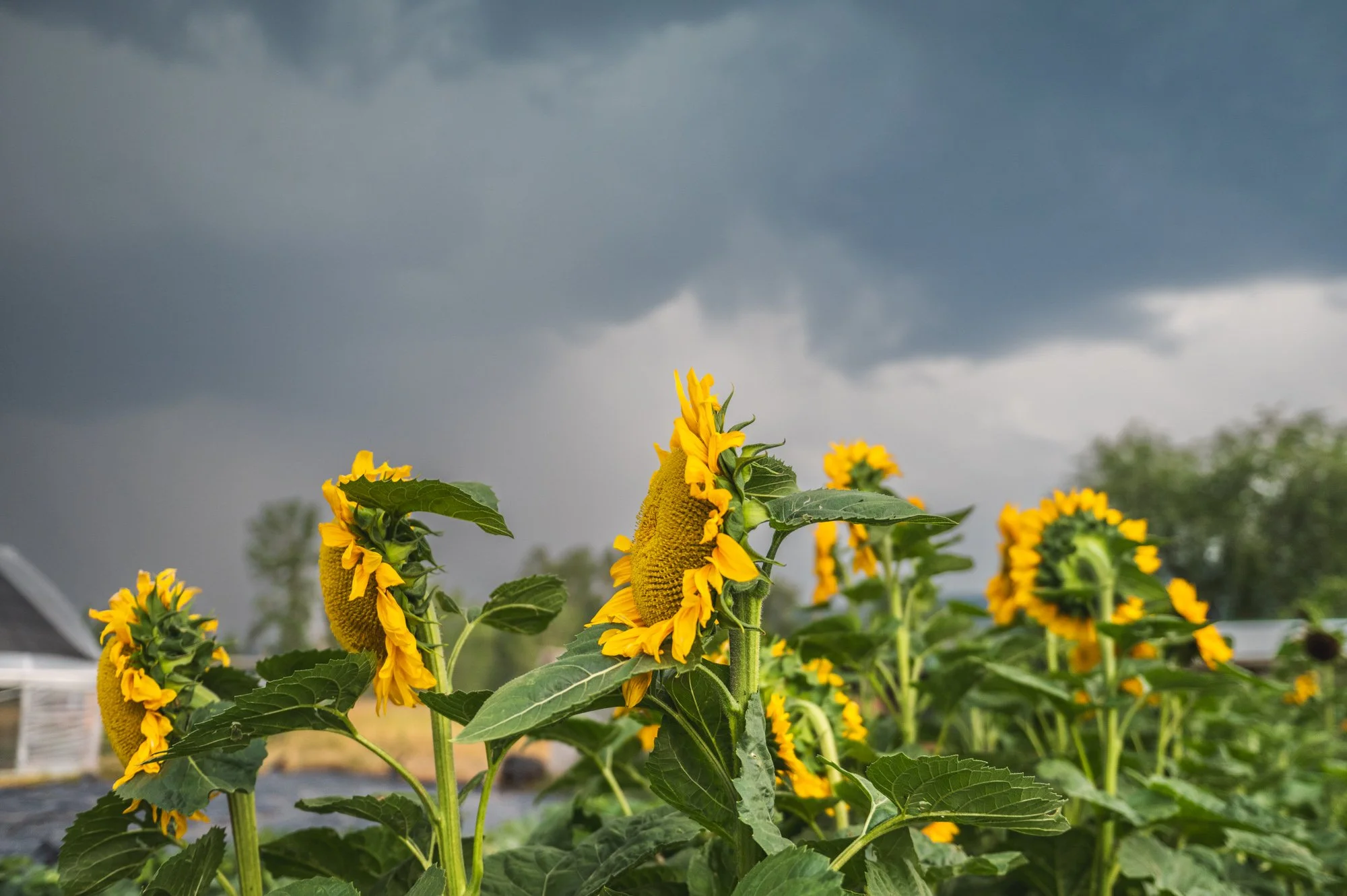
Our Practices
At Long Step, we grow a wide variety of crops in a no-till, permanent bed system, practicing a market-garden style of growing. We are certified organic as well as certified Real Organic. We believe healthy soil supports healthy plants which in turn grow more vibrant, nutrient rich food for our community.
Why No-Till
When we say we grow using a no-till system, people often have a lot of questions. No-till is not something there’s a certification out there for, or currently really any one definition. Here’s what it means for us.
We grow in permanent beds, as in, we have beds that stay in production, cover crop or fallow every year, as well as permanent walkways through the beds. This means our farms looks more like a very large scale garden than what you might typically think of as a when you think “farm”.
We never use a tractor in our fields and we never invert our deep soil layers, even in our process for establishing beds. We primarily use hand tools, the largest which is a tilther, a tool that mixes the top inch of amendments we add to soil when we’re prepping beds and is powered by a hand-drill. We’ve established new beds as we’ve expanded as a farm by putting down a silage tarp for several months to kill off grass/ pasture, then broad-forking and adding compost + soil amendments on top.
To us, not tilling in our fields from the beginning was both practical (we didn’t own a tractor at the time) and in line with our values. Practicing minimal disruption to our soil layers means the wild abundance of life down there has a chance to grow and thrive. We do our best to think, when approaching our farm health, in terms of amending the soil rather than the plants. This is a direct contrast to how a conventional farm might rely heavily on immediately available fertilizers which can lead to problematic runoff. We try to approach for farm as a whole ecosystem, starting with the ecosystem of the soil, which in turn supports our crops.
In addition to being in line with our values system, no-till means our fields are quiet and free of diesel exhaust. We also believe it will help us fight weeds in the long term, since without turning over soil, we’re bringing a lot less weed seeds to the surface. Getting our beds ready for planting takes a bit longer than it might if we used a tractor, but to us, it feels like a worthwhile trade off. We do now own a tractor on the farm, but we use it primarily for heavy lifting as well as plowing snow in the winter.
When we first arrived to this land in 2020, we believed that no-till was the best practice we could adopt for both stewarding the land in the long term and helping battle weed pressure in an organic growing system. We still believe that, and are always happy to talk about our practices!
Why Organic
We are certified organic by the Montana Department of Agriculture. While many of the practices we follow on this farm go way beyond the certification, we invested in this certification so that our customers can feel 100% confident that we stand behind our claim. We also believe that the more infrastructure and systems we can create in our country that support organic, regenerative growing the better, and this certification is one way we can put our money toward that goal.
Organic growing, at its most basic, means that we never add any pesticides, herbicides or other synthetic additives to our fields or plants. To make this possible, we have systems in place that focus on soil fertility, crop rotation and biodiversity, as well as weed, pest, and disease management. We maintain diligent records to ensure these systems are being followed and we are reviewed annually, including an in-person inspection, by our organic certifier.
Keeping up our organic certification is certainly an additional cost to us for practices we were doing already, but we think it’s worth for it for you, the customer, to have peace of mind when it comes to the food you’re not only investing your dollars in, but feeding yourself and your family.
Why Real Organic
In addition to being certified organic, we’re also certified Real Organic by the Real Organic Project. The Real Organic Project in an awesome organization that came together after a number of people saw the challenges for small farmers doing the hard work of beyond organic, regenerative farming without there being any sort of nationally recognized program around it. They describe it as “started by farmers to protect the meaning of organic.” In order for a farm to be Real Organic, it must first be certified organic by a USDA approved entity, but then the farm undergoes a further application and inspection. This certification works to highlight the difference in practices between large-scale, industrial, potentially hydroponic farms that can still qualify for the organic certification versus farms doing additional regenerative, soil-focused, whole-system-focused practices (for example, minimal tillage, cover cropping, crop rotation, pasturing animals and more).
The Real Organic Project has a lot of great resources on their website, for example a section for The Eaters, as well as a Podcast. Check out their resources. We’re stoked they’re doing the work that they’re doing!



